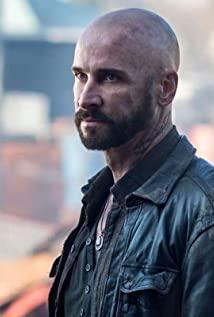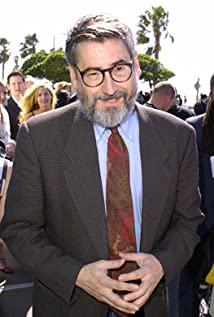The highlight of the first episode, Incident On and Off A Mountain Road, was that it had a beautiful heroine. . . And this episode seems to be the only one without a dew point. . --b
The third episode of Dance of the Dead is set in the future during World War 3, where society is full of violence and gore and an eerie attitude towards death. What are ghosts, people are the most terrifying. Probably this is what director Tobe Hooper has always believed. But I don't think this episode is as scary as his Texas Chainsaw Man. . Anyway, World War 3 is fun. .
In the fourth episode, Jenifer set the main horror object as a woman with a devil face and devil body (--b) devil's habit. In fact, the structure of the story is very old-fashioned, one man after another repeating the same fate in Jenifer. But the important thing is that the opposition between justice and evil in the structure of the plot has not changed, and it is not as violent as some people say that the men were seduced by J-they started from the beginning (accommodating J) to the end (killing J ) are all out of kindness. Good has always been good, evil has always been evil, but good has failed. The point is this: goodness fails precisely because it does not become evil, which means that failure is the inevitable result of goodness.
The director of the sixth episode of Homegoing is Joe Dante. It also directed. . . . . "School of Rock". . . . . This episode is monumental in expanding the scope of the horror genre. . . I couldn't help laughing when I saw that group of soldier zombies didn't bite or scary, but just obediently asked to vote in the general election.
The highlight of the seventh episode of Deer Woman is that the heroine is a Brazilian supermodel according to the subtitles. But I think it's pretty ugly. The director didn't stop.
The eighth episode, Cigarette Burns, is the one with the strongest flavor of the literary film, and the horror and depressing atmosphere of the whole movie is one of the best two episodes in these thirteen episodes. It spent 50 minutes discussing the function of the movie, or the function of a really good movie, which is like the angel in "The End of the World" who had his wings cut off, making people give up or pass away or illusory beauty s things.
The tenth episode of sick girl eh. . . . . . . . . . . This is. . . . . . Feminist horror film. . .
The eleventh episode, Pick Me Up, is so important that it obviously influenced some of the plot settings of No Country For Old Men. The perverted killer man molested the owner of the gas station canteen, the tense atmosphere in the hotel, and the chase on the highway. . . Very similar.
Episode 13 Imprint After watching this last episode, I really decided to write something about this entire American drama. It is necessary to admire the self-deprecating spirit of the Americans. After twelve episodes, the last episode of bonus, I found Takashi Miike to shoot; and Takashi Miike also proved to the audience that Americans are right to laugh at themselves-watching horror movies, the trouble is still Look at Japan. The metaphor of the film was there from the very beginning: on a boat, an old American man sat in the middle of a group of Japanese, with an expressionless expression. The brief dialogue stated that he was looking for a Japanese woman he knew. This plot itself symbolizes the matter of "inviting Takashi Miike to shoot the last episode" - after watching twelve episodes of European and American horror movies, the audience wants to find the feeling of Japanese horror movies in their memory in bonuses. And the Japanese woman in the recall shot is really uncomplimentable, which satirizes the ignorance of the audience. The woman was gone, the Americans were leaving, and a little dwarf came out to keep him. From now on, Takashi Miike began to teach Americans the lesson of horror movies. As with the aforementioned third episode, the most terrifying thing in this episode is the people. But with the same motif, Americans will use punk violence to take drugs and dirty, while Miike Takashi tells the story layer by layer, gradually infiltrating the perverted deformities of the most depressing and terrifying people with exquisite film structure. This structure is completed by the heroine’s storytelling time and time again; and the old American man also changed from his indomitable expression to grief at the beginning, from grief to anxiously wanting to know the truth (thereby suggesting that the Japanese horror film implicit power), from anxiety to genuine fear. If it really is in front of you from the beginning, like "Irrevocable", its terrifying tension will no longer be there. In fact, this is really the case. In front of Takashi Miike, what kind of horror are the twelve episodes mentioned earlier? in addition. . . Miike Takashi seems to be a twin control, for details, please refer to this movie and "Ghost Call 2" and "Three Gentlemen 2: Box Burial" and "Crow High School" and xxxxx. . .
View more about Masters of Horror reviews











